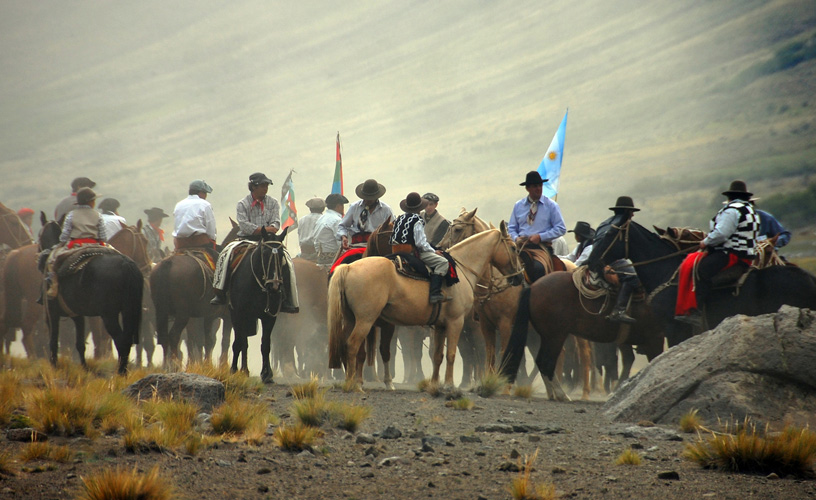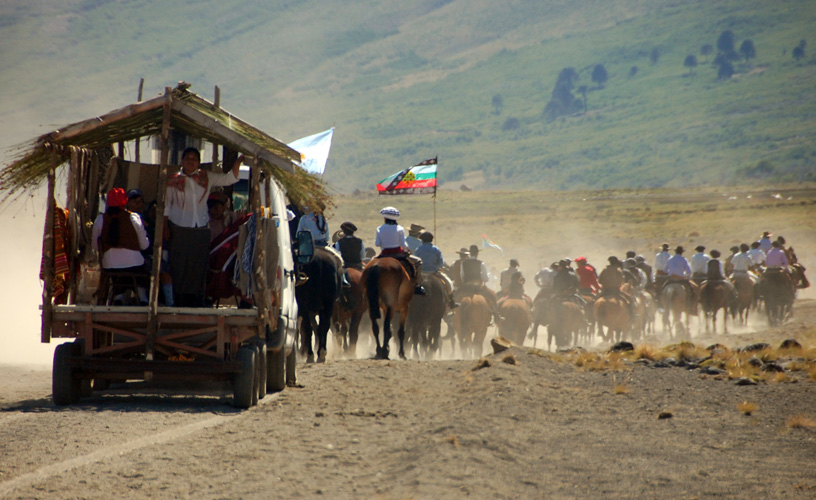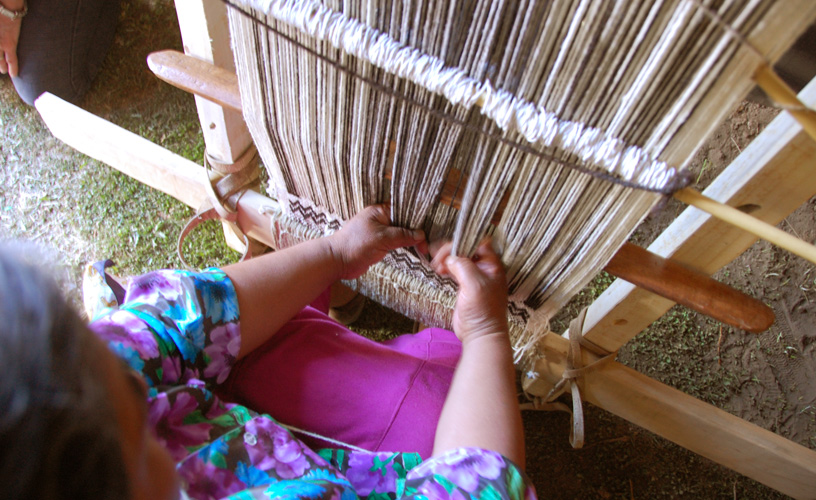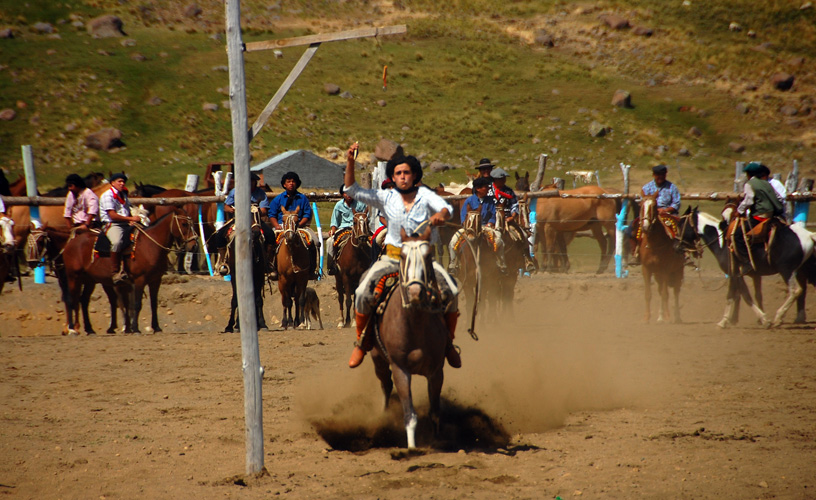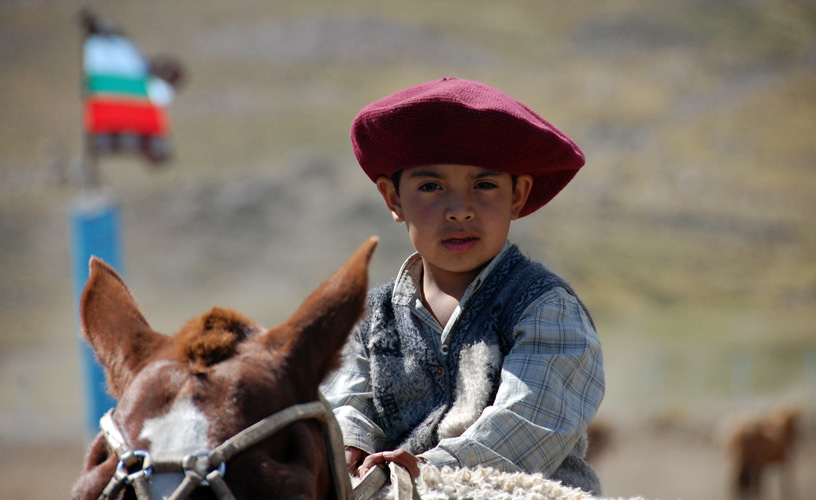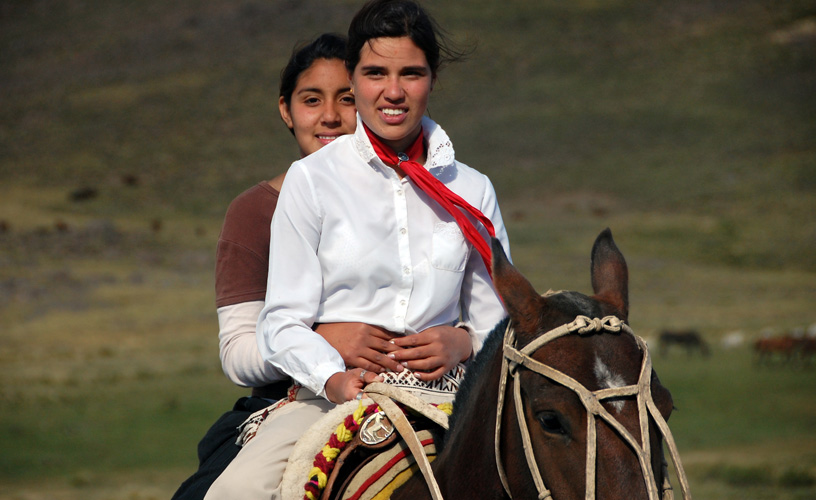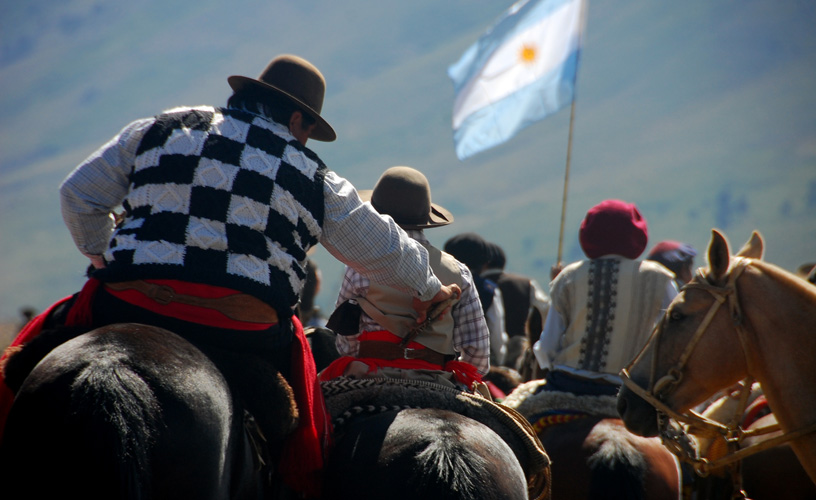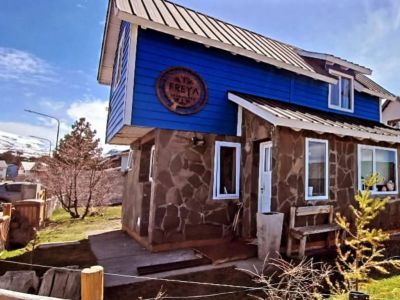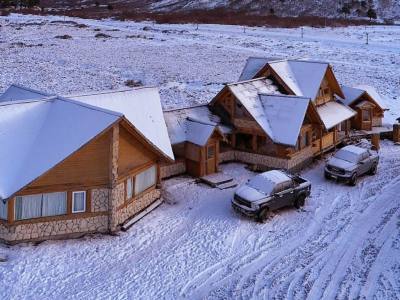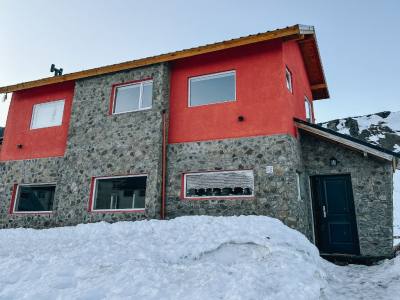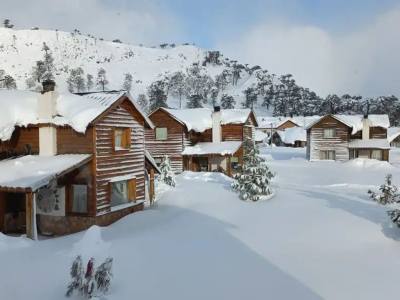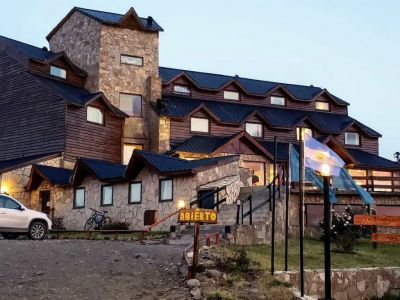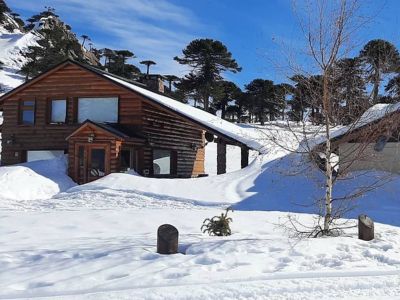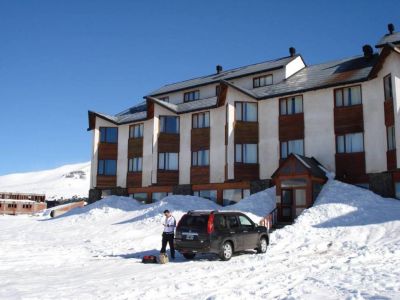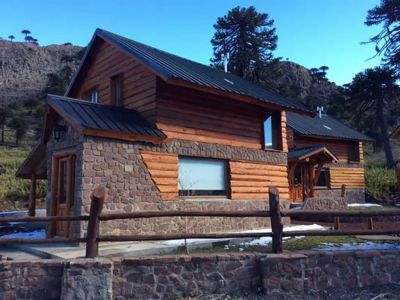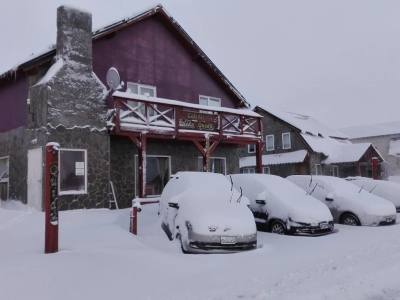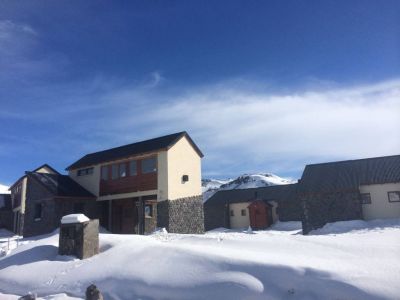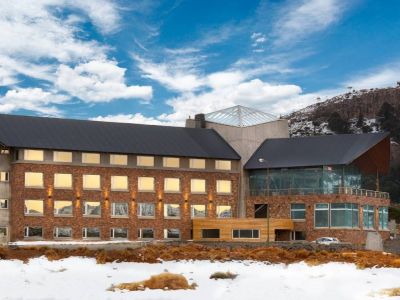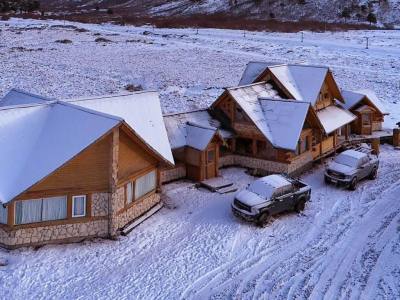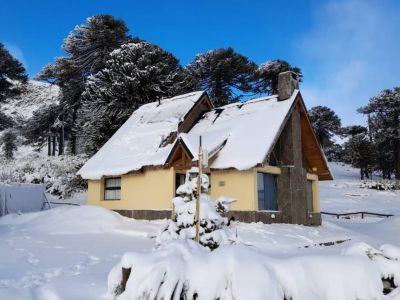Surrounded by unspoiled nature, the Millaín Carrical community was the host of the meeting. Whether of Mapuche or white origin, a great deal of people coming from outside this town attends this celebration, “dressed up” for this special occasion.
During the last days of summer, we had an appointment at the Loom Festival in the valley of Cajón Chico, very near Caviahue. This is a “summer cattle transhumance area” for the Mapuche people and ideal for the event.
The mountain embraces the wide valley where a group of houses, some lagoons and huge rocks seemed to have been spread at random. In this peaceful spot, horses, cows and goats quietly grazed unaware of this celebration.
National colors were displayed all around the area and flags and posts of the riding area revealed the festival spirit. Nothing was left to chance.
Like any other riding on wild horses, the newsreader and payadores (gaucho minstrel) were present and cheered the contestants on from the box by loudspeaker. Chamamé (rural dance music), southern songs, jokes and anecdotes were part of the entertainment repertoire.
On the opening, horsemen from several communities started to appear bearing their insignia. Behind a dust cloud, these horsemen proudly stepped forward showing off their best clothes and the bright tack goods of their horses.
“Sorry for the dust, but it is the arrival of Argentinian peasants! Don’t stop clapping your hands!”, words uttered by the presenter. “Dogs, faithful to their gauchos, could not stay at home and they have also come to this celebration”, he added.
“Times change”, says an old expression. While the old horsemen displayed their traditional woolen hats and knives attached to their belts, the young ones showed off their contemporary clothes: simple woolen beret on their heads and cell phones in their pockets of the loose-fitting bombacha pants.
There are always peasants carrying their little children on the saddle and, as these children are used to riding a horse, their tiny feet could only be imagined.
Do they come today too?
Perhaps because it was its usual way towards a watering hole, a herd of male goats easily crossed the parade. Nobody give any warning: it was only natural.
Every group showed its most skilful men. From the selection of the best “tack” to the last rodeo, not only horsemen but also their horses showed off. Dealing with wild horses as usual, the rider and horse started to blend as one.
The stand where loom knitting items were on display was the main attraction. Different kinds of blankets, ponchos and woven wide belts with several techniques showed the knowledge and the creativity of their craftsmen. The young woman Lorena Torres ran the organization, proud of her community and of her own role inside it.
With a humble simplicity, a loom teacher, Herminia González, taught us the previous steps to the weaving: preparing the warp with the wool from their sheep, washing, dyeing, setting up the wooden frame, all of which is made by the women weavers.
“What product do you think that dyes the clothes?”, asked Lorena. “The soot from the stoves, the onions skins and pine kernels, among other ways of dyeing”, she told us taking into account our lack of knowledge.
Nowadays, the young people are using the typical words once used by the elderly and they are very happy about this. This way, the Mapuche traditions are passed on from generation to generation and kept alive.
As we talked on, Herminia showed her art on the loom looping the yarns, by grabbing the woven piece with a wood stick in order to tighten it. Proud of herself, she told us that the handcrafters of the community Millaín Currical had been rewarded as the best weavers in the Province of Neuquén.
One kiss on the cheek is the traditional greeting. We bade farewell to them and took this expression of love and respect as our own.
The Loom Festival has developed from the beginning and is expected to become a festival for everyone: the contestants, the attendants and visitors like us who promise to come back the following year.
We wondered about the anecdotes and experiences which will continue to be the focus of the conversations over the bonfire among horsemen. All of them will have the possibility of revenge the following year.
Mónica Pons
Eduardo Epifanio
